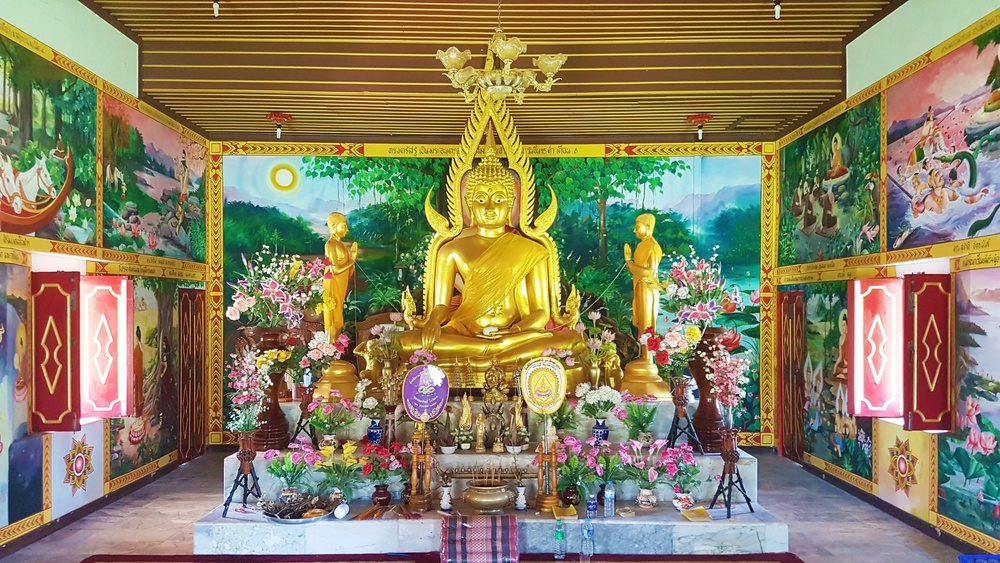Exploring Buddhist Festivals in India: Dates, Rituals, and Cultural Significance
India, the cradle of Buddhism, is not only home to several ancient Buddhist sites but also hosts a vibrant calendar of festivals rooted in the teachings and legacy of the Buddha. Buddhist festivals in India go beyond religious celebrations — they are profound expressions of peace, spiritual discipline, compassion, and cultural richness. From sacred full-moon observances to vibrant masked dances in Himalayan monasteries, these festivals offer deep insights into Buddhist values and community traditions.
In this article, we explore the dates, rituals, and cultural significance of some of the most revered Buddhist festivals in India.
1. Buddha Purnima (Vesak) – The Most Sacred Day in Buddhism
Date: Full moon day of Vaisakha (April–May)
Location: Bodh Gaya, Sarnath, Kushinagar, and across India
Buddha Purnima is the most important of all Buddhist festivals in India, marking the birth, enlightenment, and Mahaparinirvana (death) of Gautama Buddha. Celebrations take place in monasteries, temples, and sacred pilgrimage sites.
Rituals:
- Offerings of flowers, incense, and candles
- Chanting of Buddhist scriptures
- Processions with Buddha statues
- Acts of charity and kindness
Cultural Significance:
This day is a spiritual milestone for Buddhists worldwide. It embodies the essence of Buddhism — the triumph of enlightenment over ignorance.
2. Hemis Festival – Honoring Guru Padmasambhava
Date: 10th day of the 5th lunar month (June or July)
Location: Hemis Monastery, Ladakh
Held in honor of Guru Padmasambhava, also known as the Second Buddha, the Hemis Festival is one of the most iconic Buddhist festivals in India, especially in the Himalayan region.
Rituals:
- Cham dances by monks in colorful masks and silk costumes
- Sacred music with traditional instruments
- Unveiling of thangkas (Buddhist scroll paintings)
Cultural Significance:
The festival symbolizes the victory of good over evil and is deeply rooted in Vajrayana Buddhism. It also showcases Ladakhi art, music, and community spirit.
3. Losar – Tibetan Buddhist New Year
Date: February or March (based on lunar calendar)
Location: Ladakh, Sikkim, Arunachal Pradesh
Losar marks the start of the Tibetan Buddhist calendar and is celebrated with pomp and devotion, especially in Indian regions with Tibetan populations.
Rituals:
- Cleaning and decorating homes and monasteries
- Prayer ceremonies for peace and prosperity
- Mask dances (Cham), music, and feasts
- Offerings to deities and spirits
Cultural Significance:
Losar is a time of renewal and purification. It combines spiritual practices with cultural festivities, making it one of the most colorful Buddhist festivals in India.
4. Kalachakra Festival – A Rare Spiritual Event
Date: Varies (held occasionally)
Location: Usually at Bodh Gaya
The Kalachakra (Wheel of Time) Festival is a significant Vajrayana Buddhist event, often led by His Holiness the Dalai Lama. Though not held annually, it draws global attention when organized in India.
Rituals:
- Construction of a sand mandala
- Empowerment teachings by the Dalai Lama
- Meditation sessions and mass prayers
- Dismantling of the mandala to signify impermanence
Cultural Significance:
Kalachakra is considered one of the most profound spiritual experiences in Tibetan Buddhism, promoting world peace and enlightenment.
5. Lhabab Duchen – Buddha’s Descent from Heaven
Date: October or November
Location: Ladakh, Sikkim, Himachal Pradesh
This festival commemorates the Buddha’s descent from Tushita Heaven, where he taught the Dharma to his mother.
Rituals:
- Lighting of butter lamps
- Special pujas and teachings
- Community feasts and offerings
Cultural Significance:
It’s one of the four most important holy days in Tibetan Buddhism. Actions performed on this day are believed to be multiplied many times over in karmic value.
6. Ullambana – Festival of Ancestor Worship
Date: Around August–September
Location: Maharashtra, particularly among Mahayana Buddhist communities
Ullambana, also known as the Ghost Festival, is observed to relieve the suffering of ancestral spirits.
Rituals:
- Food and incense offerings to the deceased
- Chanting of the Ullambana Sutra
- Acts of compassion and charity
Cultural Significance:
It reflects Buddhism’s deep respect for ancestors and the belief in transferring merit through prayers and good deeds.
7. Ganden Ngamchoe – Tribute to Je Tsongkhapa
Date: December (25th day of the 10th Tibetan month)
Location: Monasteries in Dharamshala, Ladakh, and Sikkim
This festival honors Je Tsongkhapa, the founder of the Gelug school of Tibetan Buddhism.
Rituals:
- Lighting of butter lamps
- Prayer gatherings
- Recitation of teachings
Cultural Significance:
It’s a solemn yet beautiful festival that emphasizes wisdom, devotion, and monastic learning.
Why Buddhist Festivals in India Matter
These Buddhist festivals in India are not only rooted in centuries-old spiritual traditions but also continue to shape cultural identities and community life across regions. They are moments of deep collective introspection, celebration, and learning. Each festival offers a way to connect with the Buddha’s teachings — whether through meditation, ritual, or joyful communal expressions.
Moreover, many of these festivals take place at sacred sites associated with Buddha’s life and teachings — Bodh Gaya, Sarnath, Kushinagar, and Tawang — enhancing their spiritual and historical significance. With the rise of spiritual and cultural tourism, these festivals have also become gateways for global travelers to immerse themselves in India’s Buddhist heritage.
Conclusion
Exploring Buddhist festivals in India is an enriching experience that brings together faith, culture, and human values. Whether it’s the serenity of candlelit prayers on Buddha Purnima or the vibrant masked dances at Hemis, each celebration offers a unique insight into the living traditions of Buddhism.
If you’re planning a spiritual or cultural journey, timing your visit with one of these festivals could turn your trip into a once-in-a-lifetime experience — one filled with peace, joy, and profound enlightenment.


